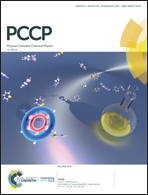Flexible lipid nanomaterials studied by NMR spectroscopy
Abstract
Our review addresses how material properties emerge from atomistic-level interactions in the case of lipid membrane nanostructures. We summarize advances in solid-state nuclear magnetic resonance (NMR) spectroscopy in conjunction with alternative small-angle X-ray and neutron scattering methods for investigating lipid flexibility and dynamics. Solid-state 2H NMR is advantageous in that it provides atomistically resolved information about the order parameters and mobility of phospholipids within liquid-crystalline membranes. Bilayer deformation in response to external perturbations occurs over a range of length scales and allows one to disentangle how the bulk material properties emerge from atomistic forces. Examples include structural parameters such as the area per lipid and volumetric thickness together with the moduli for elastic deformation. Membranes under osmotic stress allow one to further distinguish collective undulations and quasielastic contributions from short-range noncollective effects. Our approach reveals how membrane elasticity involves length scales ranging from the bilayer dimensions on down to the size of the flexible lipid segments. Collective lipid interactions of the order of the bilayer thickness and less occur in the liquid-crystalline state. Emergence of lipid material properties is significant for models of lipid–protein forces acting on the mesoscopic length scale that play key roles in biomembrane functions.



 Please wait while we load your content...
Please wait while we load your content...
